Scimitar Read online
Page 18
She called Sassoon as soon as she was dressed, making an appointment for a haircut next Tuesday, when she planned to be in the city again. The next call she made was to her daughter.
“Have you heard from your Sonny Boy yet?” she asked.
“Not since Saturday,” Elita said.
“Then he did call.”
“Yes, he called.”
“Did you see him?”
“Yes, I saw him.”
“Where?”
“We went to the Statue of Liberty.”
“Did you take him back to the apartment?”
“We came back here, yes.”
“I hope you had a lovely time,” Carolyn said.
“Yes,” Elita said. “We had a lovely time.”
“But you haven’t heard from him since.”
“No.”
“Mm,” Carolyn said.
Elita hated when she did that. Intimated through a murmur or a grunt or even the faint lifting of an eyebrow that Elita had somehow been … duped again, gulled again, led down the goddamn garden path again by yet another unscrupulous male bent on humiliating her. In retaliation, she said, “I’m going to meet Margaret Thatcher tomorrow night.”
“Oh, are you?” Carolyn said.
The tone of her voice indicated that she thought Elita was the victim of a severe delusional system and needed immediate observation. Elita hated when she did that, too, used that condescending tone.
“I’ve been invited to a formal at the Plaza,” she said curtly. Stiffly, actually. Coldly, in fact. Hoping her mother got the message that she wasn’t particularly enjoying her little thrusts this afternoon.
“What will you wear?”
“I thought the blue gown. The one …”
“Yes, I know the one,” Carolyn said. “Who invited you?”
“A man from the British Consulate.”
“My,” Carolyn said. “Thatcher, hm?”
“Yes. It’s a big Canada Day celebration. She’ll be there, and so will a lot of other important people.”
“My,” Carolyn said again, but her tone sounded somehow different.
“I may get to meet her,” Elita said.
“Maybe you can ask her out to Westhampton.”
“Maybe I will.”
“What’s this man’s name? From the consulate.”
“Geoffrey Turner.”
“Where’d you meet him?”
“It’s a long story.”
Which Carolyn knew meant mind your own business, Mom.
“Will you be coming out to the beach this weekend?” she asked.
“I’m not sure yet.”
“When will you know?”
“I’ll call you Friday.”
“Because I was hoping you’d bring out some clothes for me.”
“What do you need?”
“Some of the things in my lingerie drawer. The bikini panties from Bendel … there’re six of them in different shades …”
“Uh-huh.”
“And you should find some garter belts in that same drawer … a black one, a red one …”
Her mother had met an interesting man, she guessed.
“And a white one,” Carolyn said. “They’re all in that same drawer.”
There was a silence on the line.
“Elita?” she said.
“Yes, Mom.”
“Did you hear me?”
“Yes, Mom.”
“Do you know the white garter belt I mean?”
“I’ll look for it.”
She didn’t have to look for it. It was hanging over the shower rod in her bathroom, drying with the …
“And the sheer white hose to match it,” Carolyn said.
How do mothers know? Elita wondered.
“Elita?”
“Yes, Mom.”
“Can you do that for me, darling?”
“Yes, Mom. If I come out.”
“I wish you would. And, oh, yes …”
The red shoes, Elita thought.
“There’s a pair of high-heeled red shoes in my closet …”
“Uh-huh.”
“If you can bring those out, too, I’d appreciate it.”
“Okay, Mom.”
“You can put all of it in that little Louis Vuitton bag on the top shelf in my closet.”
“Okay. If I come.”
“Well, I hope you will. Have a nice time tomorrow night.”
“Okay.”
“And give my regards to Maggie,” Carolyn said, and hung up.
“My wife is allergic to plastic,” he explained to each of the pharmacists. “Don’t you have an old glass eyedropper someplace back there?”
No, they did not have any old glass eyedroppers back there. Everything was plastic nowadays. Which was fine unless someone was planning to measure a corrosive chemical.
But Sonny had been taught to believe that a man’s fate was written on his forehead and that a destiny appointed by God was impossible to avoid.
He went into the hobby shop looking only for a beginner’s chemistry set, and he found several such, all of them containing glass test tubes and glass stirring rods and what appeared to be glass droppers—but he couldn’t be certain. He asked the salesperson—a young woman whose name, ANNETTE, was lettered on a plastic tag pinned to her meager chest—to open one of the sets for him so he could take a good look inside, something she was reluctant to do until he flashed a plaintive smile at her. He would have settled for a dropper made of linear high-density polyethylene, but the dropper in the kit for adult-supervised ten-year-olds was made of glass. Genuine glass. As valuable to him as any diamond. A glass dropper plus a lot of other stuff he couldn’t use and didn’t need, including a dozen or more chemicals like calcium oxide, and sodium silicate, and silver nitrate, and cupric chloride.
Pleased by his discovery but annoyed by its price tag—twenty-nine dollars and ninety-nine cents, plus tax—he paid for it at the cash register and was about to leave the shop when it occurred to him that a place like this just might carry the delivery system he needed.
“I’ll just look around,” he said, and began wandering the shop.
He knew just what he was looking for.
In this most materialistic of nations, there had to be a toy, a game, an entertainment designed for children—as were the chemistry sets—which would prove useful to his needs. Each and every one of the water pistols was made of plastic. One of them was made to resemble an Uzi; the things Americans taught their children. He felt certain that any of the plastics used in their manufacture would melt when brought into contact with the reagents he planned to use. Besides, if he drew a fake gun and leveled it at the President, it would provoke the same response as a real one.
He kept searching.
In one section of the shop, he found shelves and shelves of little jars of paint and—stacked alongside them—boxes containing what the manufacturer called an “Airbrush and Propellant System.” The back of the box explained that this was a complete airbrush system including ozone-safe propellant, and that it could be used for “painting plastic models and other arts and crafts projects.” The side panel listed what the set included: the aforementioned ozone-safe airbrush propellant; a six-foot-long flexible hose; a color-mixing pipette; the propellant control assembly; three half-ounce jars; an organizing tray; a single-action, external-mix airbrush; and a complete instruction manual. The photographs on the box made it apparent that the set was made of plastic. But since it was designed to accommodate paint, he felt certain the plastic would be inert.
He looked for Annette. She was busy with another customer, but she kept tossing him a look that said, “I’ll be with you in a second, darling, please don’t go away.” She was possibly the ugliest young woman he’d ever seen in his life; he flashed a smile that said, “Take your time, my adorable one, I have all day.”
When finally and breathlessly she joined him, he asked if he could see the instruction manual inside the box.
&
nbsp; She said, “Oh.”
“Is there a problem?” he asked.
“Well, the box is sealed.”
“Yes, I see that,” he said. “But there aren’t any chemicals in it …”
“Well, no, but …”
“… and you did open the other one for me,” he added, subtly reminding her that they’d already been illicitly involved, in a sense. She considered this now. His steady smile and penetrating gaze were quite unsettling her.
“I guess I can let you have a look,” she said.
“I would appreciate it,” he said softly.
She slit open the single strip of transparent tape sealing the box. Her eyes met his. She slid out the contents for him. As delicately as if he were raising the hem of her nightgown, he picked up the instruction manual. She got so flustered he thought she might faint. Another customer came in. She debated devotion versus honor and duty and went reluctantly to the front of the shop, tossing a lovelorn look over her shoulder. He quite pitied her.
The instructions told him what he didn’t want to learn.
The kit was designed for spraying.
There was no way a steady stream could be propelled from the airbrush.
He carried the kit to the counter at the front of the store. A woman wearing green slacks and a peach-colored blouse was standing at the counter with a doll in her hands.
“I’m sorry,” he told Annette. “I don’t think I can use this.”
Not unless he hoped to attack from a foot away—in which case hurling the sarin into the President’s face would be enormously more effective.
“I’m so sorry,” Annette said.
“But thank you, anyway,” he said.
“Come back again,” she said.
“I will,” he said.
“Soon,” she said.
“Miss?” the woman in the green slacks said. “I asked you a question.”
Annette rolled her eyes hopefully toward the door.
But Sonny was already gone.
She was wearing tight, very short black shorts, a white T-shirt without a bra, and white sneakers to match. When she got no answer at the front door, she tried the knob. The door was locked. She went around to the back of the house, tried the knob on the kitchen door, which Martin often left unlocked, and found that to be the case now. She opened the door a foot or so, called “Scott?” and got no answer. Coming into the kitchen, she called “Scott!” again, louder this time, and was about to leave when she saw the Styrofoam pellets on the kitchen counter. She scooped them up, using the flat of her hand to sweep them into the open palm of the other hand, and opened the door to the cabinet under the sink. The garbage pail was full. She tossed in the pellets anyway, lifted the plastic garbage bag out of its container, pulled the ties, and was about to carry the bag outside to where Martin stored his garbage for pickup, when she saw the three cartons sitting on the counter. All of them were open now. There was no doubt now about the red-and-white label on one of them. It read HAZARDOUS MATERIAL.
She put down the garbage bag.
Went to the carton.
Opened it.
And reached into a flurry of white Styrofoam pellets.
In the Westhampton supermarket, Sonny dropped a pair of medium-sized Playtex HandSaver gloves into his shopping basket. They were marked a dollar ninety-nine. He went down the aisles looking for baking soda, and found a four-pound box of Arm & Hammer that cost only ninety-nine cents. In a section devoted to cooking aids, he found a plastic measuring cup with markings in both ounces and milliliters for only a dollar fifty-nine, three dollars less than the glass one. He also found something he could not have named and whose use he could only imagine.
The item was a plastic tube about a foot long and an inch or so in diameter, narrow at its open end, thicker at its other end, where a yellow rubber bulb was attached. He guessed housewives used it to baste roasts or decorate cakes or whatever. He didn’t know and didn’t care. He knew to what use he would put it. It only cost a dollar seventy-nine; he tossed it into his basket.
Pleased with all his little economies, he carried his items to the checkout counter.
The paint can was labeled with the same words as those on the carton.
HAZARDOUS MATERIAL.
Her heart was suddenly pounding.
She looked in the counter drawers for something she could use to pry off the lid, and found a screwdriver in a tray alongside a handful of serving spoons. There were brown flakes inside the can. Were they the hazardous material? She did not think so. Cautiously, tentatively, she poked one finger into the can and began feeling around under the flakes. She felt something in there. Reached in with several fingers. Pulled it out. It was a plastic bag inside of which was some kind of slender glass vial with a brownish fluid in it. There was a label on the vial. It read:
He was looking for carbon tetrachloride.
This had been the solvent of choice when he was learning at Kufra. Inert. Not very volatile. Nonflammable. You used a solvent to promote mixing when you were running a reaction, adding it to your starting materials so that there’d be enough to stir. A solvent also absorbed heat, reducing the risk of the reaction being carried away. Carbon tetrachloride did all these things. He did not know that its sale had been prohibited in New York State for the past ten years.
He drove up and down the Hamptons, stopping at hardware stores and art supply shops. He could find no carbon tetrachloride. He began looking for a substitute. All of the hardware stores carried paint removers or thinners containing what the labels called “petroleum distillates,” a general term for products distilled from petroleum. But without more specific information, he was unwilling to risk any unforeseen reaction.
He found a paint stripper that contained methylene chloride, another solvent that would have been ideal for his purposes, but among the product’s ingredients, the label also listed …
Well, ammonia was okay, because it was a base …
And petroleum wax was inert, so that was okay, too.
But he was worried about the methanol and anhydrous alcohol. One of his reagents was isopropyl alcohol. Adding two additional alcohols to the mix might make the ratio of alcohol to DF too high.
DF.
The toxic chemical which when mixed with alcohol would provide sarin, a compound a thousand times more deadly.
In his mind, he went over the reaction yet another time:
He now had everything he needed but a solvent inert to the reaction.
He kept searching.
He was about to give up when he found among the cleaning solutions in one of the hardware stores a product called Carbo-Trichlor. Its label listed its main ingredient as 1,1,1-Trichloroethane. Perfect. The quart can cost only $5.99. Even better; he loved a bargain. He picked up a glass cutter from the tool section, and began prowling the shop again, still searching for his delivery system. When he passed a shelf full of rat traps, he paused for a moment, seriously considering whether it might work.
At Kufra, they had taught him how easy it was to obtain the ingredients essential to the manufacture of sarin—especially in a democracy, where few questions were asked and most questions were easily parried. Dimethylsulfoxide difluoride—or DF, as it was commonly called—was an admittedly dangerous insecticide, but when mixed with alcohol it became lethal. The beauty of sarin, in fact, was that its reagents could be stored separately, reducing the risks of corrosion or weeping, until it was time to unite them. This meant that it was possible to place the separate chemical components into cannisters kept apart by a membrane that would rupture when a bomb was dropped or a shell fired, thereby mixing the separately innocuous chemicals to form a new and deadly chemical.
Sonny had been taught to do this on a smaller scale.
No bombs, no shells.
Just a rat trap and a pair of test tubes.
Isopropyl alcohol and isopropylamine in one of the tubes.
DF in the other.
Tape both test tubes to the woode
n base of the trap, side by side.
Set the trap, pulling back the bow and fastening it in place with the locking bar.
Toss the trap at your target.
The locking bar would be jarred loose, and the powerful spring would release the bow, shattering the test tubes, combining their contents, and splashing the created sarin into the air.
Simple, inexpensive, and effective.
The only risk was breaking your own finger while you were setting the trap.
Or getting caught in the lethal splashout.
But this delivery system had been designed for use in a crowd. Drop the trap from above, let it fall where it might, spattering the sarin onto random victims. His target tomorrow night would not be a random one. Accuracy was imperative; this was a No-Fail mission. So whereas the thought of using a rat trap on a rodent like Bush seemed appropriate, he decided against it.
In the gardening section of the store, he found a pump-top spray container that looked like a fat flying saucer. The little advertising placard on the wall behind it advised him that the grip was shaped to fit the hand, and the spring-loaded thumb plunger allowed for tireless operation. The nozzle was adjustable from a fine-spray mist to a 25-foot jet stream. His gaze zoomed in on the last two lines of copy:
Made of shock-proof, non-corrosive, injection molded plastic.
The shape of the container was awkward, making it enormously difficult to conceal. But the plastic was what he wanted, and if he could find nothing else, it would have to do.
He kept searching.
She stood at the kitchen counter looking down at whatever the hell it was inside that glass tube that didn’t have any kind of stopper on it, just a tube sealed all around, wondering why Scott Hamilton was having a hazardous, corrosive material dangerous to the eyes and lungs delivered here to Martin Hackett’s beach house. She wondered, too, if Martin Hackett knew Scott Hamilton was here in his house, knew in fact that anyone was staying here. She hastily put the little plastic packet with its glass vial back into the paint can, and replaced the lid, and put the can back into the carton. The other carton contained a bottle of alcohol and a bottle of something called isopropylamine, which she couldn’t even pronounce.

 Alice in Jeopardy: A Novel
Alice in Jeopardy: A Novel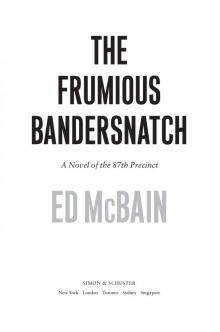 The Frumious Bandersnatch
The Frumious Bandersnatch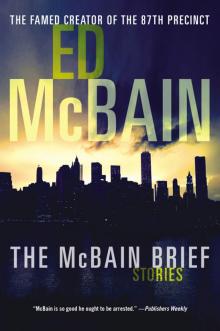 The McBain Brief
The McBain Brief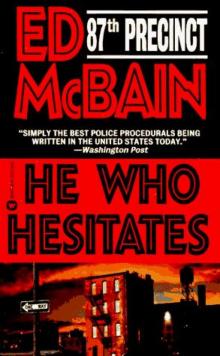 He Who Hesitates
He Who Hesitates Mischief
Mischief Fat Ollie's Book: A Novel of the 87th Precinct
Fat Ollie's Book: A Novel of the 87th Precinct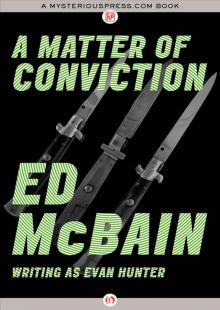 A Matter of Conviction
A Matter of Conviction Ice
Ice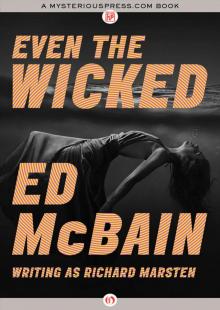 Even the Wicked
Even the Wicked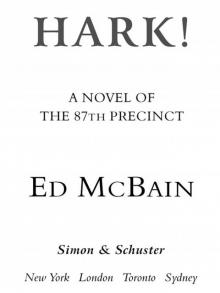 Hark!
Hark!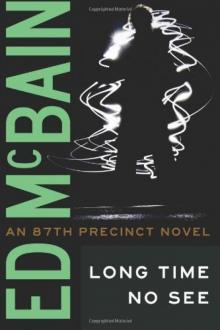 Long Time No See
Long Time No See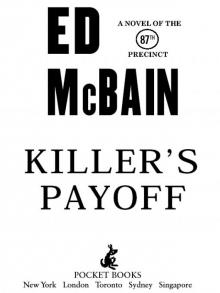 Killer's Payoff
Killer's Payoff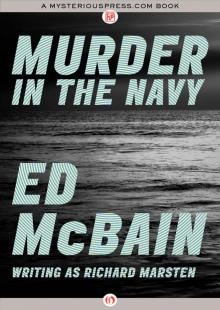 Murder in the Navy
Murder in the Navy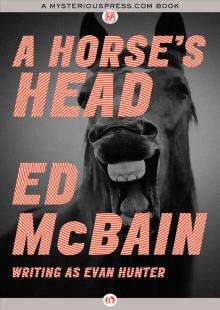 A Horse’s Head
A Horse’s Head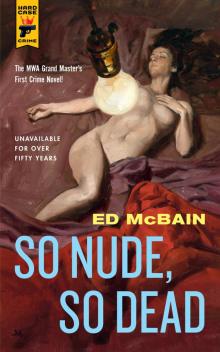 So Nude, So Dead
So Nude, So Dead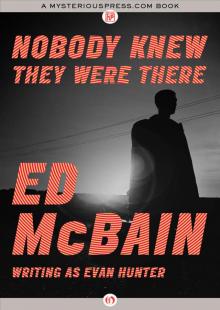 Nobody Knew They Were There
Nobody Knew They Were There Alice in Jeopardy
Alice in Jeopardy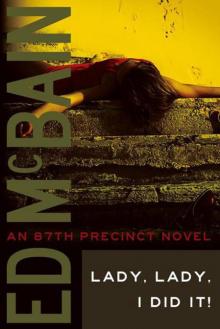 87P14-Lady, Lady, I Did It!
87P14-Lady, Lady, I Did It!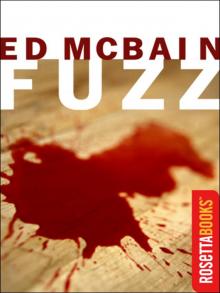 Fuzz
Fuzz Jack and the Beanstalk (Matthew Hope)
Jack and the Beanstalk (Matthew Hope)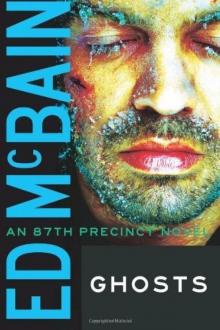 Ghosts
Ghosts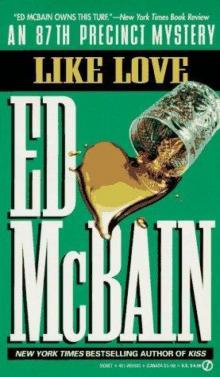 Like Love
Like Love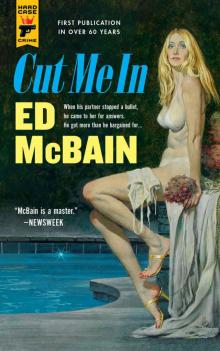 Cut Me In (Hard Case Crime)
Cut Me In (Hard Case Crime)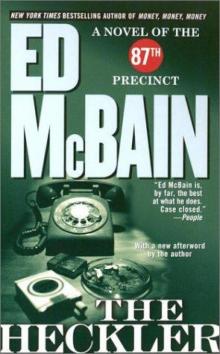 The Heckler
The Heckler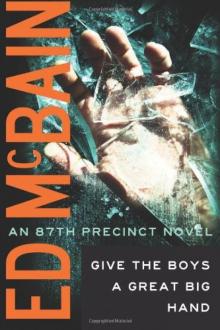 Give the Boys a Great Big Hand
Give the Boys a Great Big Hand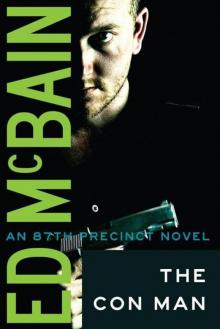 The Con Man
The Con Man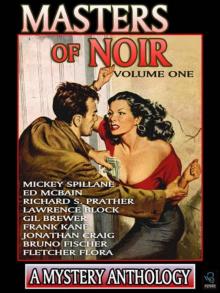 Masters of Noir: Volume One
Masters of Noir: Volume One Money, Money, Money
Money, Money, Money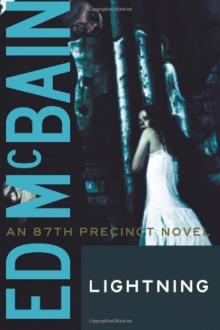 Lightning
Lightning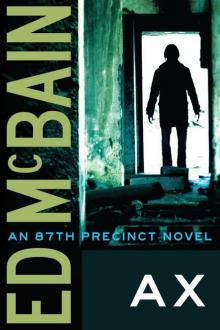 Ax
Ax The Spiked Heel
The Spiked Heel Scimitar
Scimitar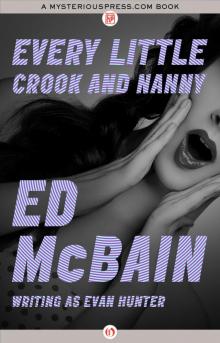 Every Little Crook and Nanny
Every Little Crook and Nanny Criminal Conversation
Criminal Conversation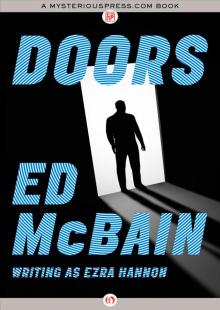 Doors
Doors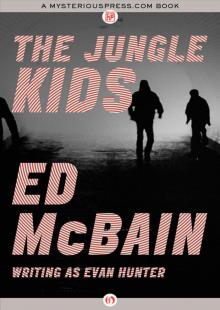 The Jungle Kids
The Jungle Kids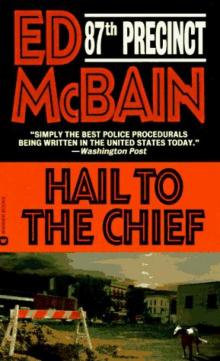 Hail to the Chief
Hail to the Chief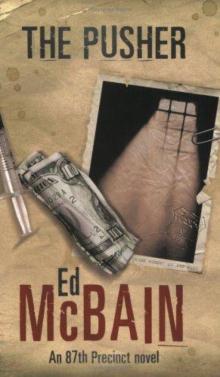 Pusher
Pusher Killer's Choice
Killer's Choice Transgressions Volume 2
Transgressions Volume 2 King's Ransom
King's Ransom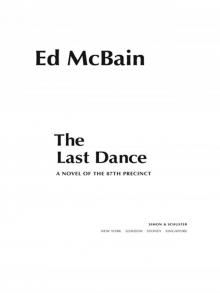 The Last Dance
The Last Dance Fiddlers
Fiddlers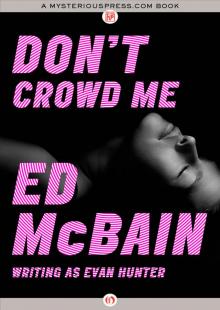 Don’t Crowd Me
Don’t Crowd Me Cinderella
Cinderella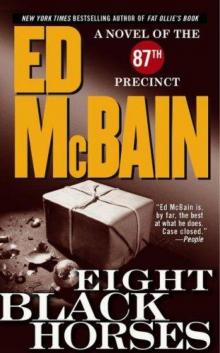 Eight Black Horses
Eight Black Horses Big Man
Big Man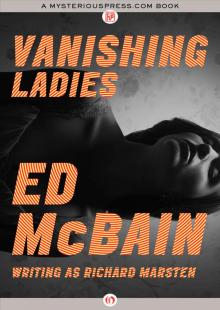 Vanishing Ladies
Vanishing Ladies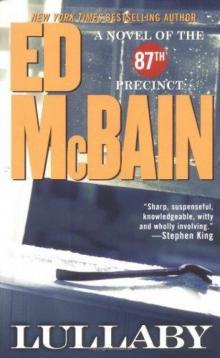 Lullaby
Lullaby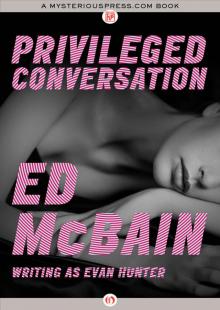 Privileged Conversation
Privileged Conversation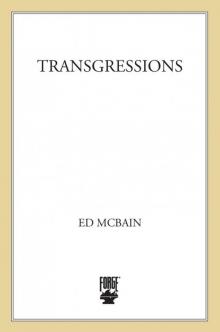 Transgressions, Volume 4
Transgressions, Volume 4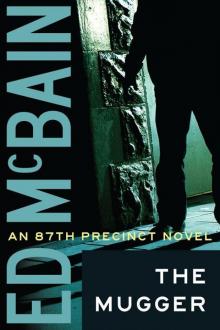 The Mugger
The Mugger Tricks
Tricks Shotgun (87th Precinct)
Shotgun (87th Precinct) Hail, Hail, the Gang's All Here!
Hail, Hail, the Gang's All Here!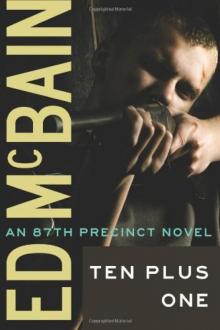 Ten Plus One
Ten Plus One Fat Ollie's Book
Fat Ollie's Book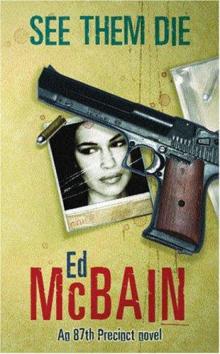 See Them Die
See Them Die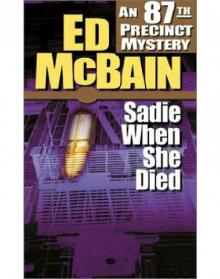 Sadie When She Died
Sadie When She Died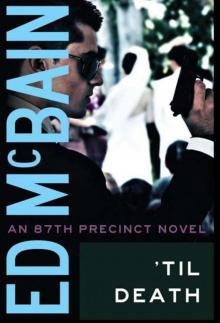 Til Death
Til Death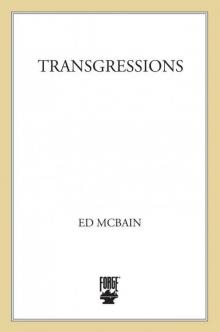 Transgressions Vol. 3: Merely Hate/Walking the Line/Walking Around Money
Transgressions Vol. 3: Merely Hate/Walking the Line/Walking Around Money And All Through the House
And All Through the House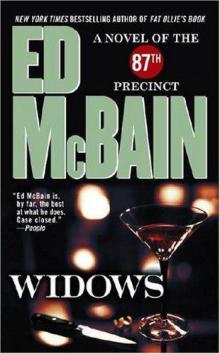 Widows
Widows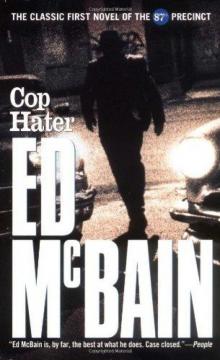 Cop Hater
Cop Hater Transgressions
Transgressions